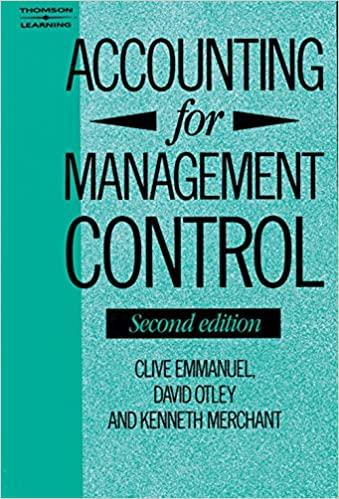



i Data Table - X $ Theoretical capacity 287,500 units Practical capacity 240,000 units Normal capacity utilization 215,625 units Selling price 43 per unit Beginning inventory 35,000 units Production 235,000 units Sales volume 255,000 units Variable budgeted manufacturing cost $ 3 per unit Total budgeted fixed manufacturing costs $ 2,760,000 Total budgeted operating (non- manuf.) costs (all fixed) $ 260,000 Print Done Cleary Corporation is a manufacturer of computer accessories. It uses absorption costing based on standard costs and reports the following data for 2014: B Click the icon to view the data.) There are no price, spending, or efficiency variances. Actual operating costs equal budgeted operating costs. The production-volume variance is written off to cost of goods sold. For each choice of denominator level, the budgeted production cost per unit is also the cost per unit of beginning inventory. Read the requirements. Requirement 1. What is the production-volume variance in 2014 when the denominator level is (a) theoretical capacity. (b) practical capacity, and (c) normal capacity utilization? Begin by determining the formula that is used to calculate the production-volume variance. (Abbreviations used: Bdgt = Budgeted, Mfg. = Manufacturing.) Production- ) = volume variance Next calculate the production-volume variance for each denominator level (a) theoretical capacity, (b) practical capacity, and (c) normal capacity utilization. Label each variance as favorable (F) or unfavorable (U). Production- Capacity type volume variance (a) Theoretical (b) Practical (c) Normal Cleary Corporation is a manufacturer of computer accessories. It uses absorption costing based on standard costs and reports the following data for 2014: B Click the icon to view the data.) There are no price, spending, or efficiency variances. Actual operating costs equal budgeted operating costs. The production-volume variance is written off to cost of goods sold. For each choice of denominator level, the budgeted production cost per unit is also the cost per unit of beginning inventory. Read the requirements. Requirement 1. What is the production-volume variance in 2014 when the denominator level is (a) theoretical capacity. (b) practical capacity, and (c) normal capacity utilization? Begin by determining the formula that is used to calculate the production-volume variance. (Abbreviations used: Bdgt = Budgeted, Mfg. = Manufacturing.) Production- ) = volume variance Next calculate the production-volume variance for each denominator level (a) theoretical capacity, (b) practical capacity, and (c) normal capacity utilization. Label each variance as favorable (F) or unfavorable (U). Production- Capacity type volume variance (a) Theoretical (b) Practical (c) Normal Requirement 3. Why is the operating income under normal capacity utilization lower than the other two scenarios? During 2014 Cleary had in inventory levels. The allocated to each unit of production, and, when those units are sold, the Normal utilization capacity is the capacity of the three, hence in this year, when production was than sales, the absorption-costing based operating income is the smallest when normal capacity utilization is used as the denominator level. Requirement 4. Reconcile the difference in operating income based on theoretical capacity and practical capacity with the difference in fixed manufacturing overhead included in inventory. (Abbreviation used: Mfg. = Manufacturing.) Less: Less: Multiply by: Difference in operating income = Difference in fixed mfg overhead included in inventory










